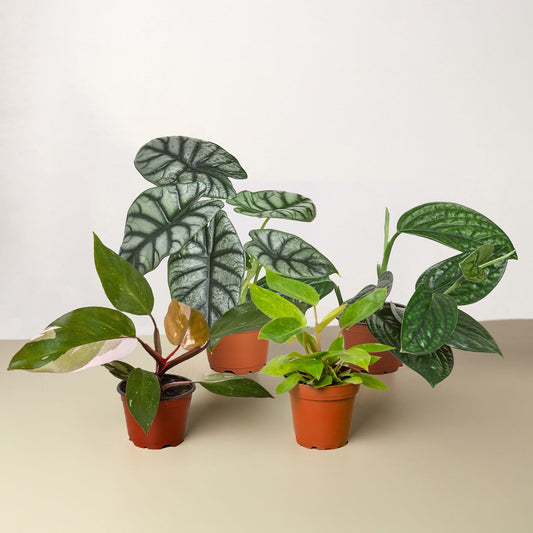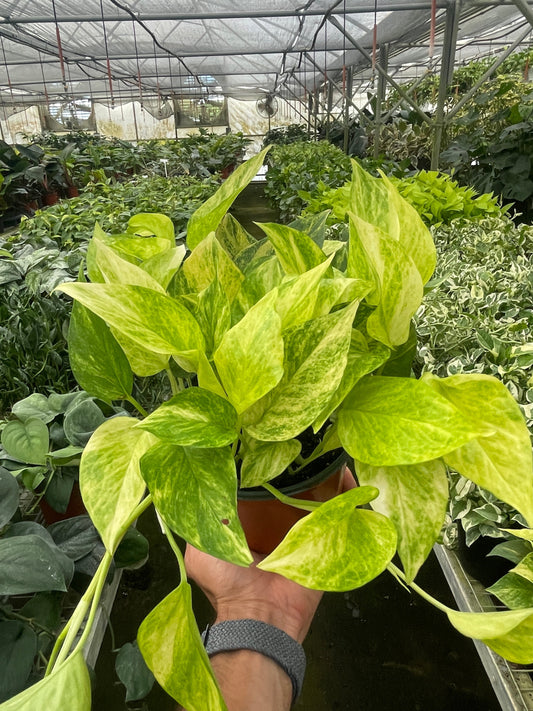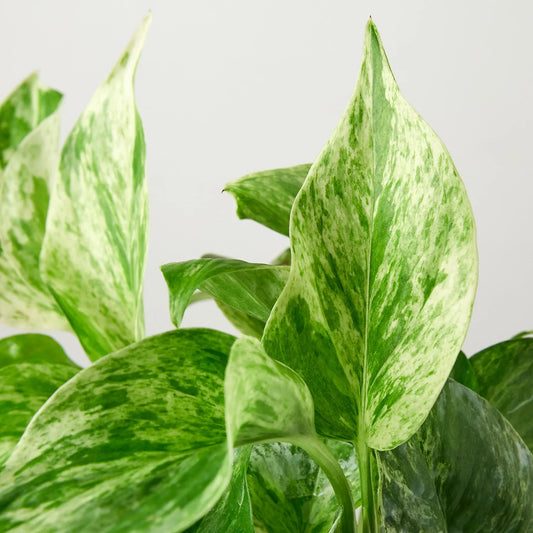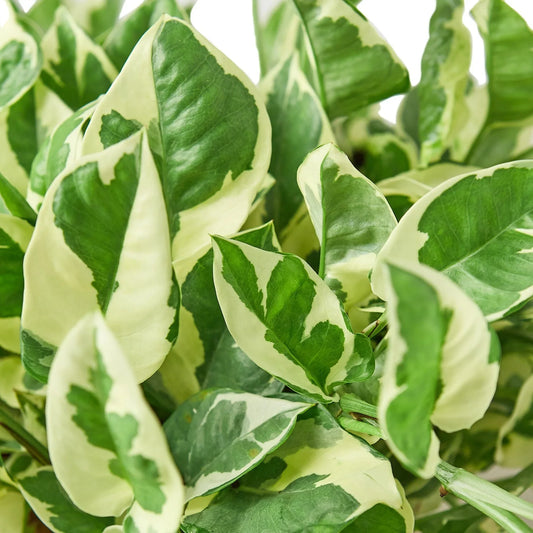How to Repot a Haworthia in 5 Easy Steps
Cafe Planta Team
Repotting your Haworthia might sound like a small chore, but it's a task that can significantly impact the health and vibrancy of your plant. Whether you're a seasoned plant parent or just starting to grow your green thumb, learning how to repot these charming succulents can make a big difference in their growth.
In this article, we're going to walk through five simple steps to repot your Haworthia, ensuring it thrives in its new home. We'll cover everything from choosing the right pot to understanding how to handle the plant gently. Let’s get started!
Step 1: Know When to Repot Your Haworthia
Before diving into the actual process of repotting, it’s crucial to know when your Haworthia needs a new pot. Unlike some other plants, Haworthias don’t require frequent repotting. In fact, these succulents are quite happy staying snug in their pots. However, there are a few signs that indicate it's time for a change.
- Your Haworthia has outgrown its pot. You'll notice roots emerging from the drainage holes or the plant looking cramped.
- The soil is no longer draining well. If water sits on top of the soil or takes too long to drain, it’s a sign the soil has compacted.
- It’s been over two years since the last repotting. Even if the plant looks fine, refreshing the soil every couple of years helps replenish nutrients and supports healthy growth.
Interestingly enough, Haworthias are slow growers, so if they aren’t showing these signs, they might not need repotting just yet. But once you spot these indicators, it’s time to prepare for the repotting adventure!
Step 2: Choose the Right Pot and Soil
Now that you've determined it's time to repot, selecting the right pot is your next mission. Haworthias have a shallow root system, so a pot that’s just a little wider than the current one will do. Look for pots with drainage holes, as these prevent water from sitting at the bottom and causing root rot, a common issue with succulents.
When it comes to soil, Haworthias thrive in well-draining mixes. You can use a standard cactus or succulent potting mix or make your own by combining potting soil with sand or perlite to improve drainage. Avoid using regular garden soil, as it tends to retain too much moisture.
- Pot size: Just slightly larger than the current pot.
- Material: Terra cotta is great because it’s porous and allows the soil to dry out between waterings.
- Soil mix: Cactus or succulent mix, or a DIY blend of potting soil, sand, and perlite.
Choosing the right pot and soil sets the stage for a healthy Haworthia, giving it a supportive environment to grow.
Step 3: Carefully Remove the Haworthia from Its Current Pot
This step is where a little finesse comes in handy. You want to be gentle with your plant to avoid damaging its roots. Start by watering the plant a day before repotting; this makes the soil easier to work with and helps the roots slide out smoothly.
Gently squeeze the sides of the pot to loosen the soil. If your plant is in a plastic pot, you might find it easier to remove. For ceramic or terra cotta pots, you might need a bit more patience. Grasp the base of the plant and lightly tug while tipping the pot upside down. If it’s being stubborn, use a blunt knife or a small tool to run around the pot’s edges.
Once you’ve freed your Haworthia, inspect the roots. Healthy roots should be firm and white. Trim away any brown or mushy roots with clean scissors to prevent any rot from spreading. Root care is essential here, as healthy roots mean a thriving plant.
Step 4: Place Your Haworthia in Its New Pot
With your plant out of its old home, it’s time to settle it into its new digs. Begin by placing a small amount of your chosen soil mix at the bottom of the new pot. This layer acts as a foundation for the plant.
Position your Haworthia in the center of the pot, ensuring it sits at the same depth as it did before. You don’t want to bury it too deeply or leave it sitting too high. Hold the plant steady while you fill in more soil around the sides. Gently firm the soil with your fingers, but don’t pack it too tightly; you want the roots to breathe.
Once you’ve filled in the soil, give the pot a gentle tap to help the soil settle. Check that the plant is stable—it shouldn’t wobble or tip over. If it does, adjust the soil until it stands upright confidently.
This step is crucial in providing a stable base for your plant's future growth. Ensuring the plant is at the right depth and settled will prevent issues as it adapts to the new pot.
Step 5: Water and Care for Your Newly Repotted Haworthia
Congratulations, you've repotted your Haworthia! But the care doesn't stop here. Knowing how to nurture it in its new environment is key to maintaining its health.
Right after repotting, it’s best to let the plant settle for a few days before watering. This waiting period gives any slight root damage time to heal and minimizes the risk of rot. Once you’re ready to water, do so thoroughly, allowing the excess to drain away completely.
After repotting, place your Haworthia in a spot where it gets bright, indirect light. Direct sunlight can scorch the leaves, while too little light might hinder growth. Monitor your plant over the next few weeks to ensure it’s adapting well. Look for signs of new growth or changes in the leaves, which indicate your plant is thriving.
- Watering: Wait a few days post-repotting, then water thoroughly.
- Light: Bright, indirect light is ideal.
- Monitoring: Keep an eye out for new growth as a sign of health.
This step completes the repotting process, ensuring your Haworthia is happy and healthy in its new home.
Understanding Common Repotting Challenges
Even with the best preparation, you might face a few hurdles when repotting your Haworthia. Let’s talk about some common challenges and how you can overcome them.
Root rot: If you notice mushy, brown roots during repotting, it’s likely root rot. This often happens due to overwatering or poor drainage. Always trim away affected roots and let the plant dry out before replanting.
Leaf damage: Sometimes, leaves get damaged during the process. While it’s best to avoid this, a few lost leaves aren’t the end of the world. Your plant can bounce back, especially if the roots are healthy.
Adapting to new soil: If your Haworthia seems to sulk after repotting, don’t worry. Plants can take time to adjust to new soil. Keep the care consistent, and it should perk up soon.
By understanding these challenges, you can anticipate and address them, ensuring your plant stays on a healthy path.
Decorating with Repotted Haworthias
Once your Haworthia is settled in its new pot, consider how you can incorporate it into your home decor. These succulents are versatile and can be styled in various ways to add a touch of green to your space.
Place your Haworthia on a windowsill where it can enjoy indirect sunlight. Pair it with other succulents or houseplants for a mini indoor garden. You can also experiment with decorative pots to match your interior style, whether you prefer a minimalist look or something more eclectic.
If you’re feeling creative, consider creating a succulent arrangement. Haworthias play well with others, and combining different textures and colors can create a stunning centerpiece.
- Windowsills: Brighten up with indirect light.
- Plant arrangements: Combine with other succulents for variety.
- Decorative pots: Enhance your home’s aesthetic.
Repotted Haworthias not only benefit from fresh soil but also add charm and personality to your home.
Repotting with Confidence: Tips and Tricks
Feeling a bit more confident about repotting yet? Here are some extra tips to ensure your repotting process is as smooth as possible:
Prepare your space: Lay down newspaper or a tarp to catch stray soil, making cleanup easier. Have your tools and materials ready to streamline the process.
Be gentle: Treat your plant with care to avoid damaging roots or leaves. Patience is your best tool here.
Timing: Repot during the growing season, typically spring or summer, when your plant is most resilient.
With these tips, you’re well on your way to mastering the art of repotting. Remember, practice makes perfect, and every plant you repot will increase your confidence and skill.
Creating a Plant-Friendly Space
Repotting is just one part of creating a plant-friendly environment in your home. Think about how your Haworthia fits into the bigger picture of your indoor garden. Consider the lighting, humidity, and space your plants need to thrive.
Grouping plants with similar care needs can make your plant care routine easier and more effective. For example, placing your Haworthia alongside other succulents means you can water and feed them on the same schedule.
Also, think about how plants can enhance your living space. They add color, texture, and even improve air quality. A well-placed Haworthia can become a focal point, drawing the eye and encouraging relaxation.
- Group similar plants: Streamline care routines.
- Enhance decor: Use plants to add interest and warmth.
- Consider placement: Make the most of your space and light.
By integrating your repotted Haworthia into your home, you’re not just caring for a plant—you’re creating a living, breathing space that benefits everyone.
Final Thoughts
Repotting a Haworthia is a straightforward task that can rejuvenate your plant and keep it thriving. By following these five steps, you’ll ensure your plant enjoys a healthy transition to its new home. Remember, repotting is not just about giving your plant more space—it's about refreshing its environment and supporting its growth.
At Cafe Planta, we're passionate about helping you care for your plants. Whether you're looking for new additions to your plant family or need advice on keeping them happy, we're here to help. Feel free to email us or send us a message on Instagram. We're excited to be part of your plant journey and help you create a beautiful, thriving collection at home.



















